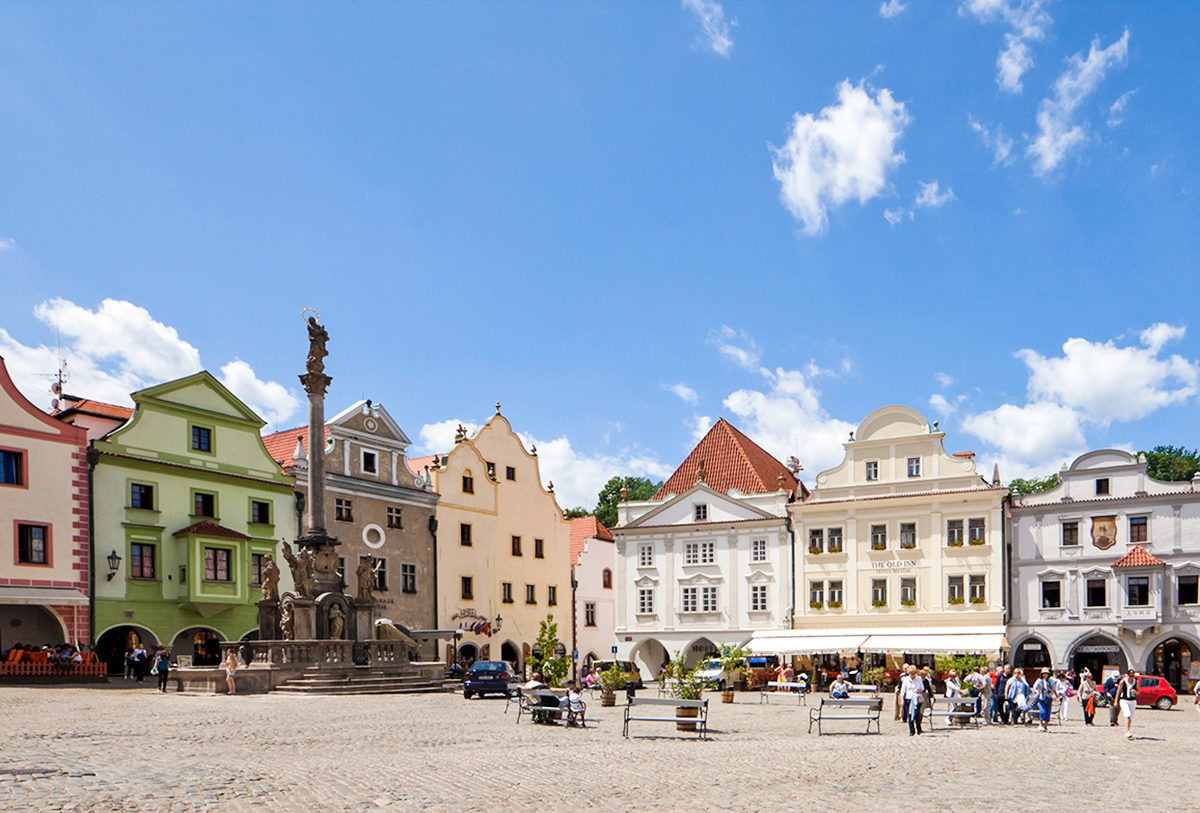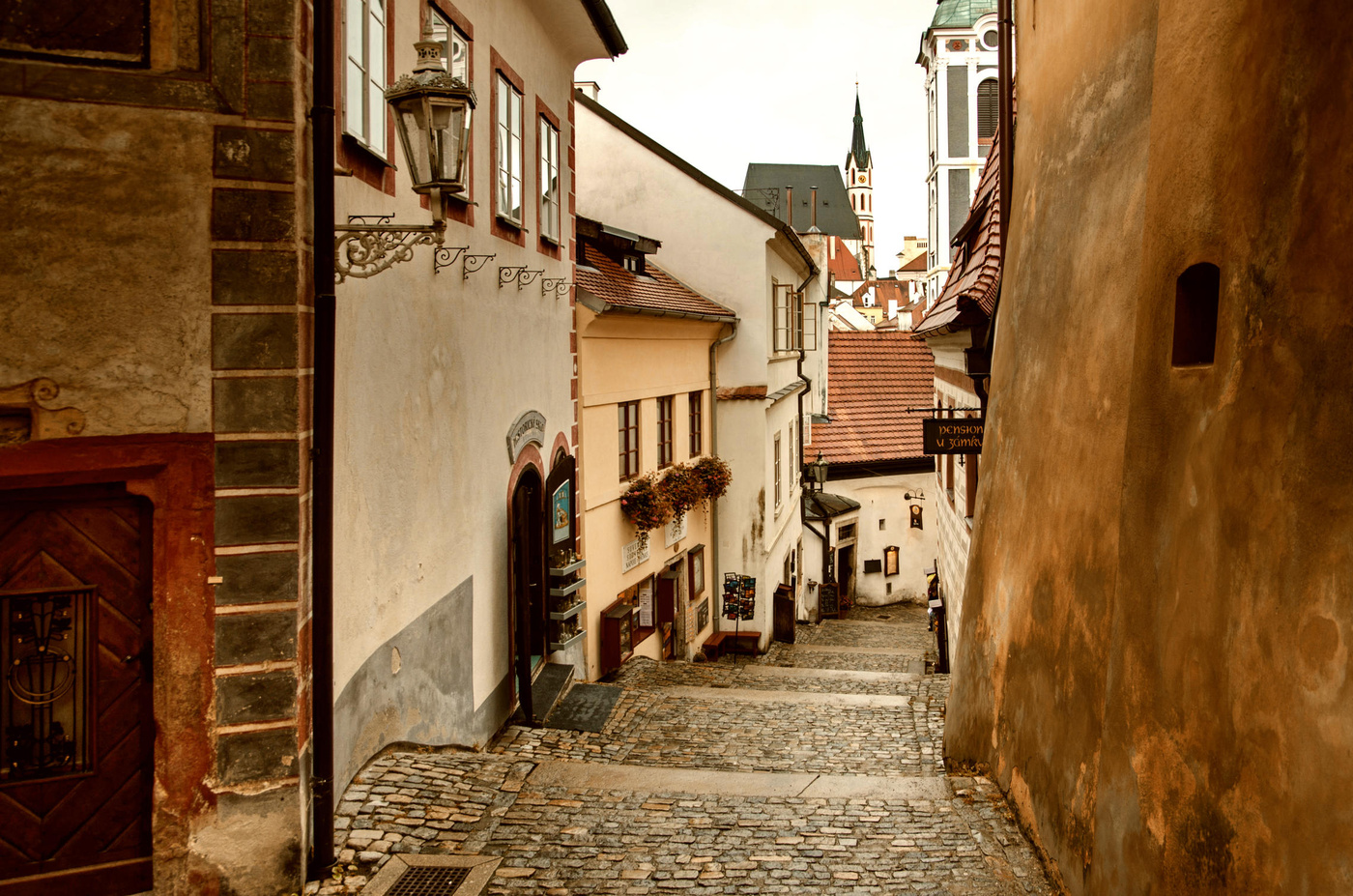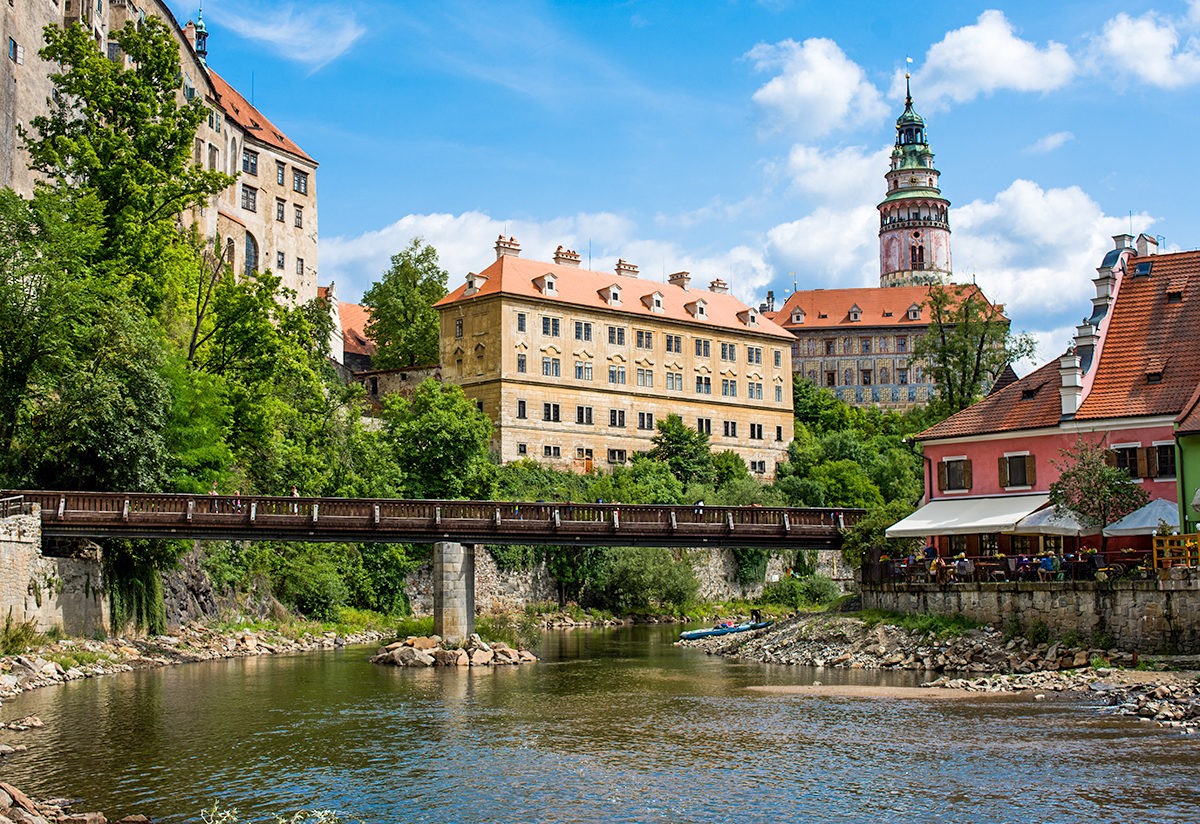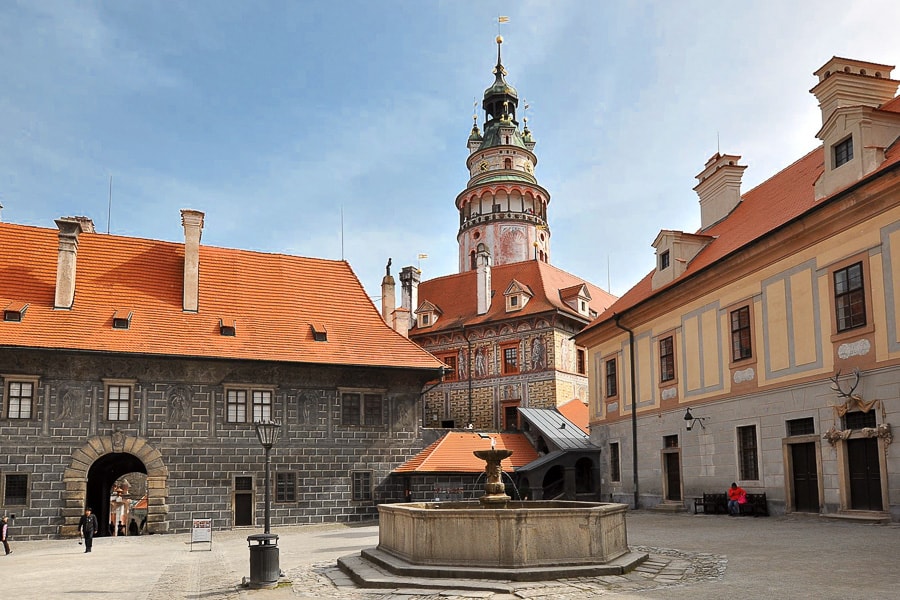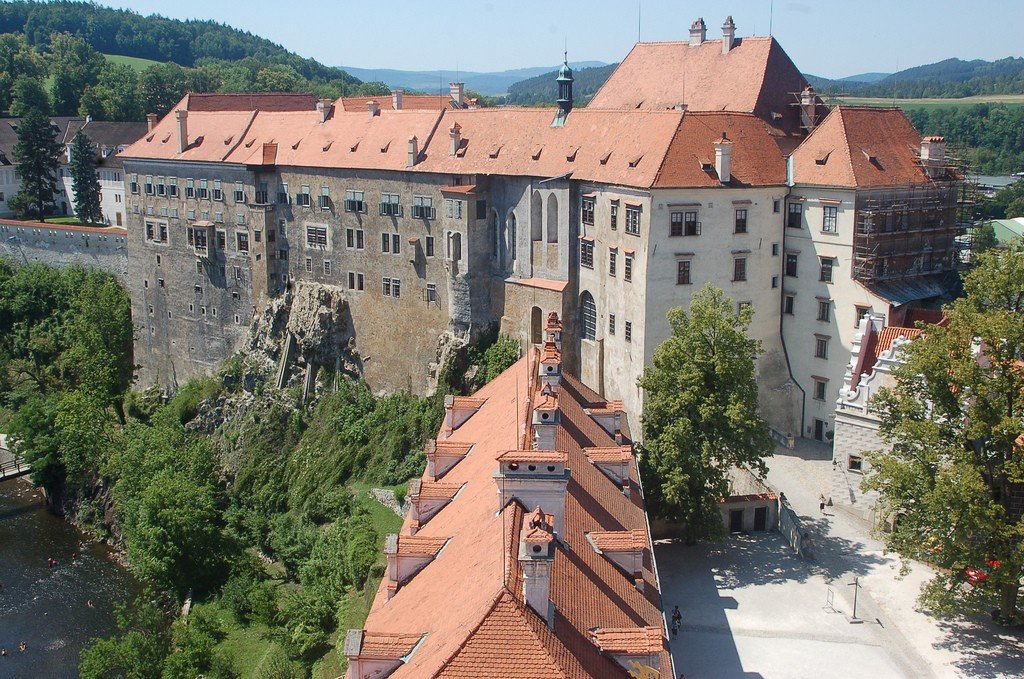
Český Krumlov is a town in the South Bohemian Region of the Czech Republic. Its historic centre, centred around the Český Krumlov Castle, has been a designated UNESCO World Heritage Site since 1992 and was given this status along with the historic Prague castle district.
The town's name begins with Český ("Bohemian") to differentiate it from Moravský Krumlov in south Moravia.
The settlement arose beneath the castle, which was built from about 1240 onwards by a local branch of the noble Vítkovci family, descendants of Witiko of Prčice. The fortress was first mentioned in a 1253 deed as Chrumbenowe. According to local legend, the name derives from Middle High German krumbe ouwe which can be translated as "crooked meadow", after a bend of the Vltava River. It was also mentioned in the 1255 Frauendienst poem by minnesinger Ulrich von Liechtenstein. Located at a ford of an important trade route in the Kingdom of Bohemia, a settlement arose soon afterwards below the castle. The Czech name Krumlov is documented as early as in 1259.
In 1302 the Vítkovci line became extinct and King Wenceslaus II ceded the town and castle to the Rosenberg family (Rožmberkové). Peter I of Rosenberg (d. 1347), the Lord Chamberlain of King John of Bohemia, resided here and had the present upper castle erected in the early 14th century. The majority of inhabitants were German-speaking at that time, having migrated from neighbouring Austria and Bavaria in the course of the Ostsiedlung. A Jewish community is documented since 1334. By 1336, Czechs may have formed a small minority, which had its own priest
The Rosenbergs strongly promoted trade and crafts within the town walls. In the late 15th century, when gold was found next to the town, German miners came to settle, which shifted the ethnic balance even more. In one of the churches the sermons were preached in Czech until 1788, when St. Jošt Church was closed. William of Rosenberg (1535–1592), High Treasurer and High Burgrave of Bohemia, had the castle rebuilt in a Renaissance style.
In 1602 William's brother Peter Vok of Rosenberg (1539–1611) sold Krumlov to the Habsburg emperor Rudolf II, who gave it to his natural son Julius d'Austria. After the Bohemian Revolt and the 1620 Battle of White Mountain, Emperor Ferdinand II gave Krumlov to the noble House of Eggenberg and the town became seat of the mediate Duchy of Krumlov. From 1719 until 1947 the castle belonged to the House of Schwarzenberg.
There were 8,662 inhabitants in Krummau an der Moldau in 1910, including 7,367 Germans and 1,295 Czechs. After the First World War, the city was part of the Bohemian Forest Region which was initially declared to be part of German-Austria. By the end of 1918 the Czechoslovak army had occupied the region, which became part of Czechoslovakia. In 1938 it was annexed by Nazi Germany, as part of the Reichsgau Oberdonau unit of Sudetenland under the Munich agreement. After World War II the town's long-standing German-speaking population was expelled and the town was returned to Czechoslovakia
During the Communist era of Czechoslovakia, historic Krumlov fell into disrepair, but since the Velvet Revolution of 1989 much of the town's former beauty has been restored, and it is now a popular holiday destination, with large numbers of tourists from Europe and from Asian countries such as China and Japan.[citation needed] In August 2002, the town was damaged in a great flood of the Vltava River
Most of the architecture of the old town and castle dates from the 14th through 17th centuries; the town's structures are mostly in Gothic, Renaissance, and Baroque styles. The core of the old town is within a horseshoe bend of the river, with the old Latrán neighborhood and castle on the other side of the Vltava.
Český Krumlov Castle is unusually large for a town of its size; within the Czech Republic it is second in extent only to the Hradčany castle complex of Prague. Inside its grounds are a large rococo garden, an extensive bridge over a deep gap in the rock upon which the castle is built, and the castle itself, which in turn consists of many defined parts dating from different periods. After the garden had been inadequately maintained in the second half of the 20th century, the site was included in the 1996 World Monuments Watch by the World Monuments Fund. With financial support from American Express the garden's central fountain was documented and reconstructed, and remains functional today.
It is relatively unique in that it is surrounded by a moat filled not with water, but with bears. This was an attempt the erstwhile rulers of the castle to associate themselves with the powerful Orsini family - whose name is a pun on the Italian word for bear; orso.
Český Krumlov has a museum dedicated to the painter Egon Schiele, who lived in the town.
About 10 kilometres (6 miles) from Krumlov is one of Bohemia's oldest monasteries, Zlatá Koruna ("The Golden Crown"). About 30 km (19 mi) from Krumlov is the Hluboka Castle, established in the twelfth century and later remodelled in imitation of Windsor Castle.
Český Krumlov is close to the Šumava National Park, the Czech Republic's largest national park. The Šumava mountains lie along the border with Austria and Germany and offer a range of natural habitats – peat bogs, Alpine meadows, old-growth forest, lakes, and rivers. The area is popular with walkers, cyclists, and canoeists on the Vltava. Cesky Krumlov is a short distance from the man-made Lake Lipno, on which many people take boat trips to various small towns and to the dam, with its Hydro power plant.
View of Český Krumlov from a hill
Český Krumlov is home to the Pivovar Eggenberg brewery.
Český Krumlov hosts a number of festivals and other events each year including the Five-Petaled Rose Festival (a reference to the rose of the Rožmberk crest), which is held on the summer solstice weekend. The downtown area is turned into a medieval town with craftsmen, artists, musicians, and local people in medieval costume. Activities include jousting, fencing, historical dance performances, and folk theater, in the Castle precincts and along the river. It concludes with a fireworks display.
The International Music Festival Český Krumlov begins in July and ends in August, and features international music of various genres. Other such events are held throughout the year. The summer music festivals include the blues, rock, and soul festival Open Air Krumlov, held in late June at Eggenberg Brewery Garden.
Since the Velvet Revolution in 1989, over eighty restaurants have been established in the area. Many restaurants are located along the river and near the castle.
There is a museum dedicated to the semi-precious gemstone Moldavite in the city center

